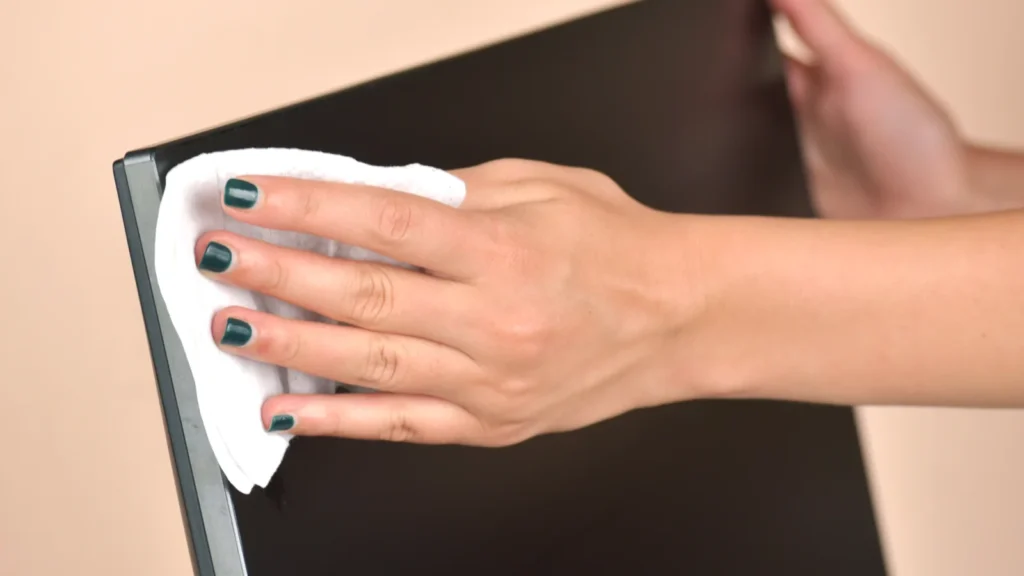Why Cleaning Your Clear LCD Display Matters
Even the most advanced LCD panels can lose their crisp visuals under layers of oil, fingerprints, or dust. Regular, safe cleaning isn’t just about looks—it helps maintain optimal performance.
- Image Clarity: Smudges and dirt reduce contrast, making visuals appear washed out or blurred.
- Touch Accuracy: On capacitive or resistive screens, grime can interfere with touch recognition, causing missed taps or inaccurate swipes.
- Hygiene: For shared devices or public kiosks, routine cleaning cuts down germ transmission and promotes user confidence.
- Device Longevity: Using harsh cleaners or rough materials can erode anti-glare coatings, damage optical bonding, and degrade polarizers.
In industrial or medical environments, clean screens translate into safer operation, more accurate readings, and a better user experience.
What You Need Before You Start Cleaning
Avoid the temptation to use glass cleaners or rough cloths. These often cause more harm than good. Instead, gather the following screen-friendly supplies:
✅ Recommended Tools
| liefert lebendige und satte Farben und verbessert die Leistung des Displays bei grafikintensiven Anwendungen. | Purpose |
|---|---|
| Microfiber cloth | Gently lifts dirt and oils without scratching |
| Distilled water | Safe, non-conductive base liquid |
| 50/50 water + isopropyl alcohol mix | Disinfects and cleans smudges safely |
| Compressed air (optional) | Removes loose dust from edges and ports |
Avoid: paper towels, rough fabrics, ammonia-based cleaners (like Windex), tap water, or window sprays—they can leave scratches or mineral spots.
Step-by-Step: How to Clean an LCD Display Properly
A few mindful steps ensure your LCD stays pristine and functional:
- Power Off the Device
Shut down completely or unplug. This helps you see dirt clearly, avoids electric shock, and prevents accidental pixel damage. - Dust First (Optional)
Use compressed air to remove loose particles—especially around edges, ports, and the display bezel. - Wipe Gently with a Dry Microfiber Cloth
Use light circular or vertical motions. It takes very little pressure to lift dust or fingerprint oils. - Use a Damp Cloth if Needed
Moisten one corner of your cloth—never soak—with distilled water or the diluted alcohol solution. Wipe gently and then dry with a clean area of the cloth to prevent streaks. - Let It Dry Fully
Wait a few minutes for the screen to air dry before powering back on.
What NOT to Do When Cleaning an LCD Screen
Some practices cause irreversible damage—avoid the following:
- Never spray liquids directly on the screen. Always apply them to your cloth first.
- Avoid ammonia or high-strength alcohol (>70%). These can strip anti-glare or optical bonding layers.
- Don’t rub hard. Excessive force may damage pixels or internal layers.
- Never clean while the screen is powered on. Moisture plus heat increases risk.
Special Considerations for Industrial and Touch LCDs
In rugged, medical, or factory-mounted displays, environments may expose screens to grease, chemicals, or airborne particles. Take extra care in these cases:
- Use anti-static wipes or supplier-approved screen-safe solutions.
- If the display is medical-grade, confirm whether disinfectant wipes or alcohol pads are permitted.
- For optical-bonded screens: realize that scratches or damage cannot be polished out easily—prevention is essential.
Häufig gestellte Fragen
Q1: Can I use eyeglass cleaner on my LCD screen?
Only if it’s free of ammonia and alcohol. Check the label carefully. Otherwise, stick to recommended solutions.
Q2: How often should I clean my LCD display?
Personal devices: every 1–2 weeks. Shared or industrial screens: daily or per shift may be necessary.
Q3: What about screens with protective films?
Treat the film just like the LCD surface. Check if it’s rated for long-term use—some films degrade and should be replaced periodically.
Q4: Are LCD screen cleaning kits worth it?
Most kits include microfiber cloths and diluted alcohol. DIY with the same materials works just as well and costs less.
Q5: Can I use 100% isopropyl alcohol to clean my screen?
No. Pure alcohol can strip coatings or damage adhesive layers. Use 50–70% solutions only.
Q6: How do I remove sticky residue?
Tragen Sie die verdünnte Lösung auf ein Tuch auf, lassen Sie es einige Sekunden lang sanft auf der Stelle einwirken und wischen Sie dann behutsam ab. Vermeiden Sie aggressives Reiben.

